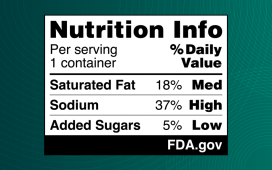Financial precarity more prevalent among Black and Hispanic versus White, those with less versus more than high school education
By Elana Gotkine HealthDay Reporter
TUESDAY, Oct. 29, 2024 (HealthDay News) — Many Medicare beneficiaries are at risk for financial hardship from the costs of a single hospital stay, according to a study published online Oct. 29 in the Annals of Internal Medicine.
Paula Chatterjee, M.D., M.P.H., from the University of Pennsylvania Perelman School of Medicine, and colleagues identified beneficiaries who would face financial precarity if exposed to the Medicare Part A hospital deductible ($1,600) in a cross-sectional study of the 2018 wave of the Health and Retirement Study. Estimates of financial precarity, defined as having insufficient funds to pay the deductible, were examined across four scenarios.
The researchers found that 45.0 percent of the 4,881 beneficiaries had insufficient funds in checking and savings accounts to pay the Medicare hospital deductible. The prevalence of financial precarity was higher for Black and Hispanic versus White beneficiaries (73.5 and 76.2 percent, respectively, versus 36.2 percent), for those with less versus more than high school education (70.0 versus 37.1 percent), and for those with three or more versus two or fewer chronic conditions (49.2 versus 39.1 percent). Overall, 50.7 percent were financially precarious when financial precarity was defined to include beneficiaries with insufficient liquid assets to pay the deductible while maintaining a $5,000 reserve for future living expenses. Thirty-nine percent remained financially precarious building off this definition to assume supplemental insurance covered the deductible.
“Broadening financial protections in Medicare to beneficiaries with moderate incomes and limited assets may achieve greater economic parity and equity among older adults by increasing assistance to those with limited savings and gaps in supplemental insurance,” the authors write.
Copyright © 2024 HealthDay. All rights reserved.








